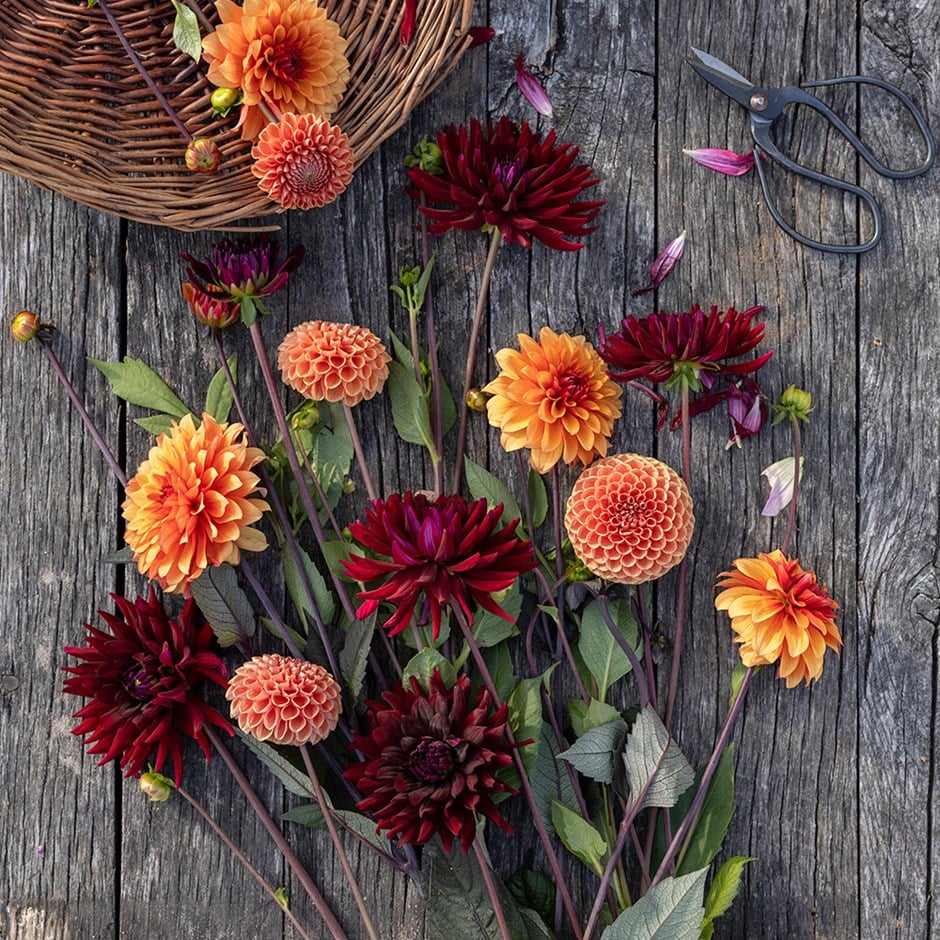Chocolate orange dahlia collection
dahlia collection
This bulb dies back after flowering each year and enters a period of rest ahead of regrowth the following season.
- Position: Full sun
- Soil: Fertile, humus-rich soil
- Rate of growth: Average
- Flowering period: July to September
- Hardiness: Half hardy (may need winter protection)
A stunning ensemble of dahlia tubers, flowering in captivating chocolate-orange hues, featuring a delightful variety of ball, decorative, and cactus forms bringing a moorish touch of elegance and vibrancy to your garden and cut-flower vases.
In each collection you will receive one tuber of each of the following:
Dahlia 'Statue of Orange': Pale orange petals, edged and striated with fine raspberry tones leading to a deep reddish-amber coloured centre. ‘Statue of Orange’ is more than a simple colour palette and close inspection marks out a subtle complexity that makes this decorative form a standout and standalone subject for a cut flower vase. Grows to 1m.
Dahlia 'Chat Noir': A sumptuous cactus dahlia with garnet red flowers (up to 15cm across), which have a near-black centre. The fully double flowers have long and narrow, pointed petals that recurve for more than half their length. This dahlia looks great planted in bold groups in a sunny, sheltered border or as part of an exotic scheme. The flowers appear from July until the first frosts, and make excellent cut flowers. Grows to 1.2m.
Dahlia 'Cornel Brons': 'Cornel Brons' has beautifully formed, perfectly round, pom-pom blooms of dusky orange. Superb as a cut flower, this dahlia would work wonderfully well with the loose flowering habit of Dahlia ‘David Howard’ and the deep red foliage of Physocarpus opulifolius 'Diabolo'. Grows to 90cm.
Dahlia tubers can be planted outside after frost, or started off in pots under glass in late winter to early spring. Plant them horizontally approximately 12cm deep, making sure the ‘eyes’ are uppermost. Allow enough room between each tuber so the plants can grow and spread to their full size without being overcrowded. While in growth, provide a high-nitrogen liquid feed each week in June, then a high-potash fertiliser each week from July to September. Stake with canes or brushwood if it becomes necessary. In mild areas, leave them in situ over winter, but protect the crown with a generous layer of dry mulch. In colder areas, carefully lift and clean the tubers once the first frosts have blackened the foliage and allow them to dry naturally indoors. Then place the dry tubers in a shallow tray, just covered with slightly moist potting compost, sand or vermiculite and store in a frost-free place until planting out again.
- Humans/Pets: Ornamental bulbs - not to be eaten

